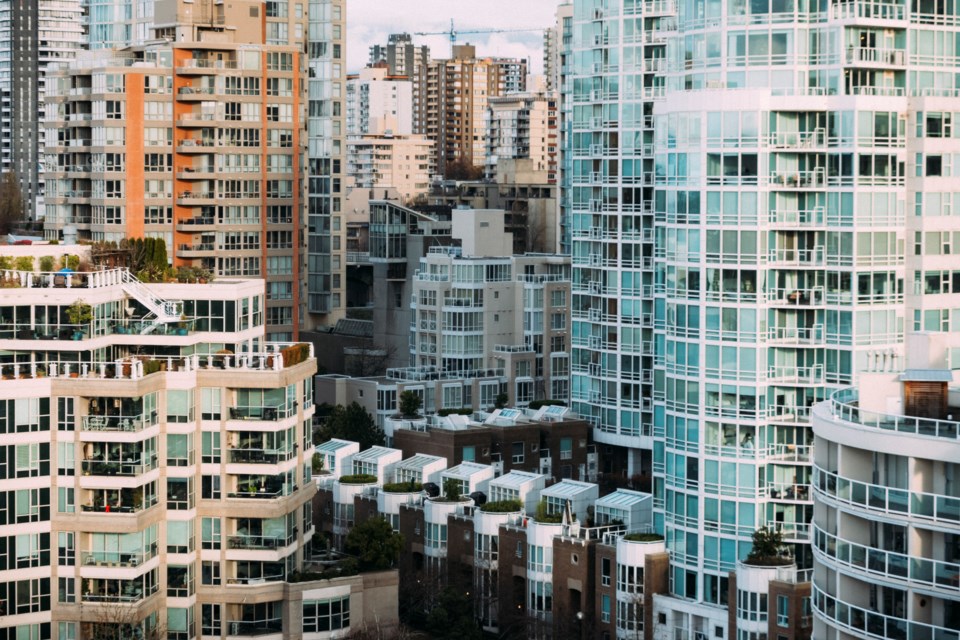Renting is on the rise in B.C. as the number of homeowners declined from its peak in 2011.
According to a released today (Sept. 21), the number of renters in B.C. (27.5 per cent) grew almost three times more than the number of homeowners (10.4 per cent) between 2011 and 2021. In addition, newly built dwellings are more likely to be occupied by renters as adults under the age of 75 were less likely to own their home in 2021 than adults in that age range a decade earlier.
Aaron Gorski, an analyst with Statistics Canada, says that while the rate of homeownership may be falling, that doesn't mean the amount of owner households has gone down.
“In fact, there are more owner households in B.C. than ever before. But what we're seeing in the census data is that the growth in renter households has outpaced that growth and owner households throughout the province,” Gorski said.
The report also shows that Kelowna had one of the highest growth rates for renters in B.C. and Canada. The rate of renters increased by 54.1 per cent, compared to the growth in homeowners which is 16.9 per cent.
“Unfortunately, these numbers come as no surprise considering the housing affordability crisis caused by chronic lack of supply caused from decades of under-building, increasing development taxes and other factors that have deteriorated affordability and made it harder to own a home,” said Kevin Lee, CEO of the Canadian Home Builders’ Association, in a news release. “Today’s census numbers reinforce the need for all levels of government to take action to address housing affordability and market-rate housing supply – this is particularly true for municipalities, who are key in unlocking more supply.”
B.C had the third-largest decline in homeownership for the country, according to the report. Provinces like Nova Scotia and Prince Edward Island saw the largest decline in homeownership.
The report said the growth in the rental rate reflects the increased construction of multi-unit buildings, such as apartments and condominiums. Gorski added to this by pointing out that 40.3 per cent of all the dwellings in B.C. built in the last five years were occupied by a renter.
“So we're seeing a lot more high rise building apartments, we're seeing more condominiums, many of these are rented and many of these are going to be found in downtown cores of urban centres,” he said.
The number of high rise apartments in B.C. has grown by just under 25 per cent, with the number of condos increasing by 15.8 per cent since 2016. The Canadian Housing Statistics Program also said over one-third of first-time buyers in B.C. bought a condo in 2020.
Only Alberta rivalled B.C. in the number of condo dwellers, but B.C. came out on top with 23.6 per cent living in a condominium.
Gorski said this shift toward apartment living can be attributed in part to the number of young Canadians moving to downtown cores. In addition, homeownership rates among those aged 25 to 29 years fell from 44.1 per cent in 2011 to 36.5 per cent in 2021.
The report highlights that both baby boomers and millennials have a strong influence on the housing market. Baby boomers made up the largest group of homeowners while millennials represented the largest share of renters.
For many British Columbians, the pressure of inflation and rising interest rates has affected how much money they spend on housing.
Gorski said that in B.C. in 2021, the rate of unaffordable housing was 25.5 per cent, down from 28 per cent in 2016. Statistics Canada calculates the rate of unaffordable housing by the number of households spending more than 30 per cent of income on shelter costs. This includes rent and utilities for renters or mortgage payments for homeowners.
“The rate of unaffordable housing was 29.7 per cent in Vancouver, and this was down from 32 per cent in 2016,” Gorski said. “And for both places, the decline in the rate of unaffordable housing was larger for renters than it was for owners.”
He said that while there has been an increase in shelter costs, the increase in income has offered a cushion to soften the blow of increased housing costs.
Gorski hopes that this data will allow Canadians to get a better sense of what is happening in their communities.
“For some, it may help give an idea of how best to make some other decisions about housing. Some people may want to move, some people may want to stay or change their budgeting around so I think it's really helpful for that,” he said.



